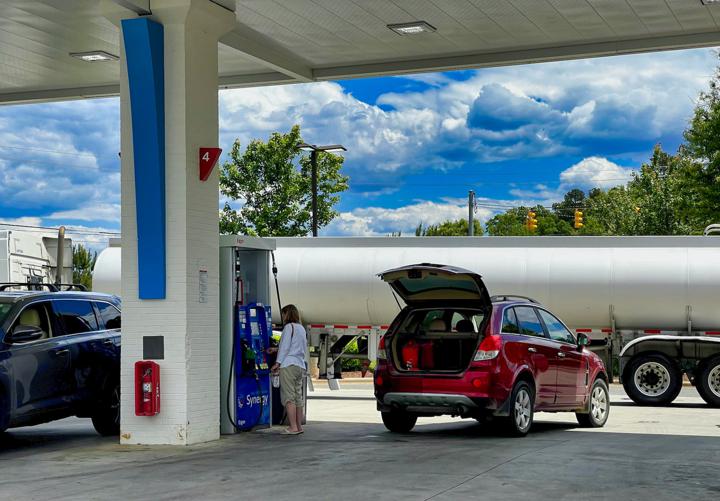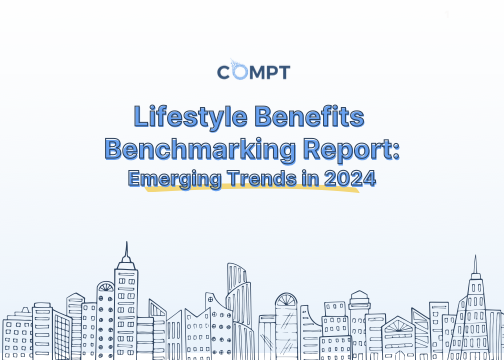by Deana deBara

The Core Consumer Price Index, a key index for measuring inflation in the United States, recently hit a 40-year high. That means that costs for everything from cars to gas prices to transportation are rising at alarming rates—all of which make commuting to work more expensive for your team members.
In response to this historic inflation, many HR leaders are exploring ways to lessen the cost burden of commuting on their teams—and that includes offering gas stipends.
If you’re part of a hybrid or fully in-person work environment, gas stipends (and other commuter stipends) can be a great way to make commuting more accessible to your team members. But if you’ve never offered gas stipends before, chances are, you have some questions about how they work.
Let’s take a look at the most common FAQs around gas stipends:
What is a gas stipend?
A gas stipend is a fixed amount of money a company provides to its employees each month to cover the cost of gas. Companies may also opt to do a more general commuter stipend, which provides a fixed amount to employees each month to cover any costs associated with their commute—for example, gas, vehicle maintenance, or public transportation costs.
Is a vehicle stipend taxable income?
The IRS generally views vehicle stipends (also known as car allowances) as compensation—which means your employees will need to pay taxes on their stipend income. The exception is if vehicle stipends are distributed under an accountable plan, which requires additional documentation and tracking of how car allowances are spent, they’re considered nontaxable.
What is the difference between a vehicle stipend and mileage reimbursement?
A vehicle stipend provides a fixed monthly amount to employees to cover vehicle-related costs (for example, insurance, gas, and wear-and-tear). Mileage reimbursements are variable; employees document their travel and are reimbursed based on the number of miles they drive each month.
Another major difference? Unlike vehicle stipends, mileage reimbursements are not considered income or compensation—and, as such, aren’t subject to taxes.
What is a FAVR reimbursement?
A Fixed and Variable Rate reimbursement (also known as a Fixed and Variable Rate allowance) reimburses any employee that uses their personal vehicle for work purposes. It combines a fixed monthly stipend to cover any vehicle-related expenses (for example, standard care and maintenance) with mileage reimbursements (which are considered variable costs, as they change based on the mileage the employee drives each month).
With a FAVE reimbursement, the fixed reimbursement is calculated based on the amount of time the employee uses their car for work—which can help companies avoid the under or overpayment of certain employees that often happens with more straightforward vehicle reimbursements.

How do cents per mile (CPM) programs work?
Cents per mile (CPM) programs reimburse employees a fixed amount for every mile they travel for work. (According to IRS guidance, the current standard mileage rate for business travel is 62.5 cents per mile.)
Do any particular states have laws to keep in mind when it comes to gas or vehicle stipends?
Some states, like California and Massachusetts, have specific requirements around reimbursing employees for mileage and use of their personal vehicle for company purposes. Because every state is different, it's important to do your research to make sure your stipend policy is compliant with both state and federal regulations.
Check out IRS guidelines to review current mileage rates by state.
Can gas cards be used as fuel stipends?
You can give gas cards as fuel stipends. But unless employees track, record, and submit their exact vehicle mileage, gas cards are considered taxable—and ensuring tax compliance when distributing third-party gift cards (instead of compensating your employee directly) can get tricky.
Are employees satisfied with vehicle stipends?
While all employees are different, most employees are happy with stipends that help make commuting more affordable—including vehicle stipends. However, employees that don’t have a car—and, therefore, don’t qualify for the stipend—might be less than pleased.
Are vehicle stipends fair?
Vehicle stipends are helpful for employees that drive a car to work—but they don’t provide relief to employees that commute to work in other ways, like taking public transport. A more general commuter stipend is more inclusive and provides financial relief to all team members, no matter how they travel to work.
Use gas stipends to lessen the financial burden of commuting
Rising costs are becoming a serious issue—so much so that the government is stepping in to provide relief. California Governor Gavin Newsom recently approved Middle Class Tax Refunds, which will send additional refunds to Californians of up to $1050 to help cover increasing consumer costs.
As HR leaders, it’s also your responsibility to step up and help your employees navigate rising costs in any way that you can—and, depending on your compensation strategy, that may include gas stipends or commuter stipends. And now that you understand how these stipends work, you’re armed with the information you need to make the right decision for your organization and your team—and do what you can to lessen the burden of increasing commuter costs on your employees.
Want to learn how stipends can help support your employees? Discover how other companies budget for different employee perks in Compt's benchmark report.

